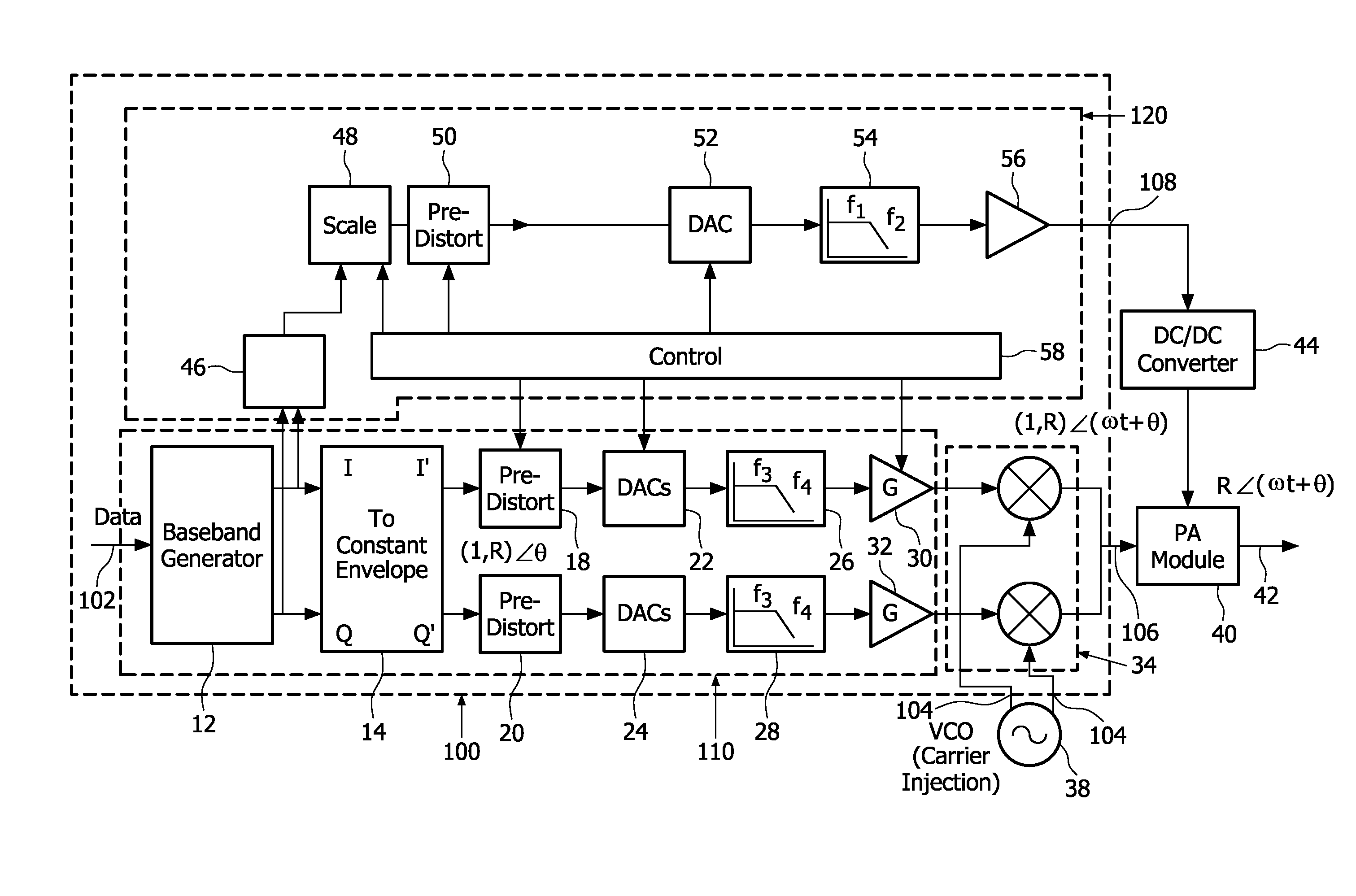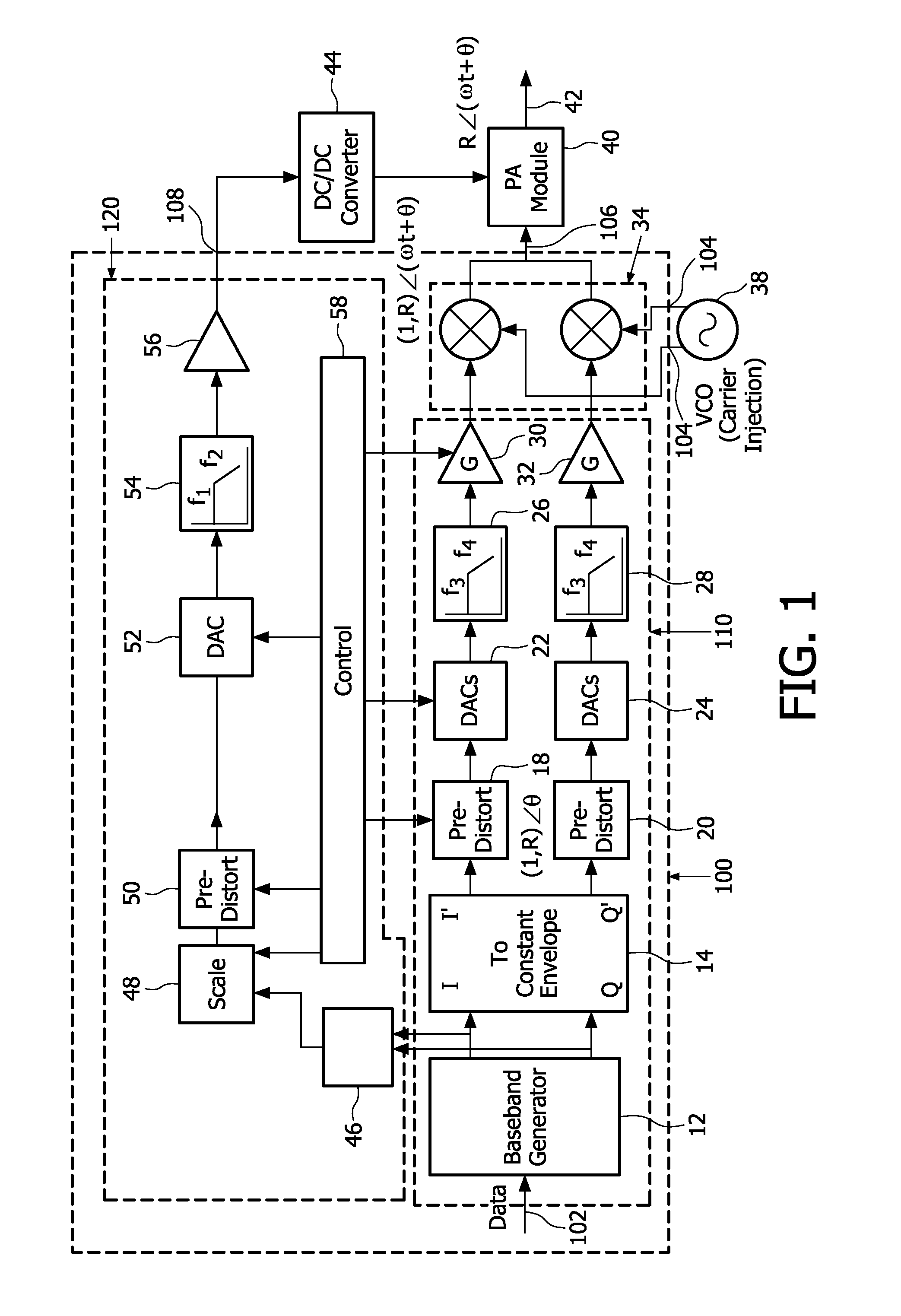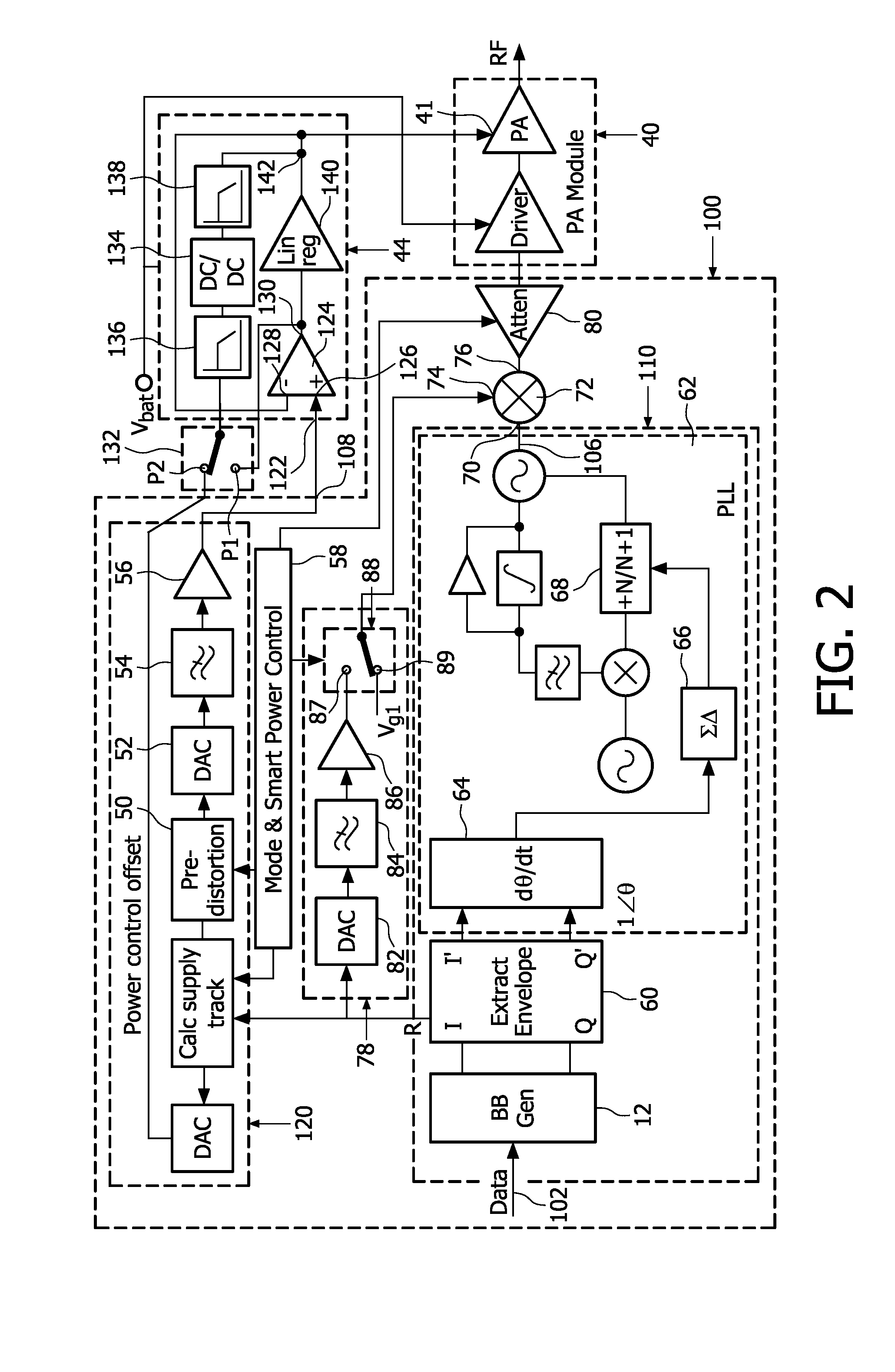Multi-mode radio transmitters and a method of their operation
a radio transmitter and multi-mode technology, applied in the direction of antennas, amplifiers, electrically long antennas, etc., can solve the problems of difficult to achieve attractive power efficiency, limited efficiency control, and inability to change the average rf output power, etc., to achieve the effect of improving the power efficiency of radio transmitters
- Summary
- Abstract
- Description
- Claims
- Application Information
AI Technical Summary
Benefits of technology
Problems solved by technology
Method used
Image
Examples
Embodiment Construction
[0036]As FIG. 1 has been described in the preamble of this specification it will not be described again.
[0037]Referring to FIG. 2, the transmitter shown is a hybrid polar radio transmitter. The transmitter comprises a modulator 100, a power amplifier 40 having a control input 41, and a hybrid supply modulator 44 coupled to the control voltage input 41.
[0038]The modulator comprises a real signal generator 110 having a data input 102 and an output 106 for a real signal at the operating frequency of the transmitter. The data input 102 is coupled to a base band generator 12 which produces quadrature related I and Q signals. The I and Q signals are applied to an envelope extract block 60 which produces a constant envelope output containing just the phase component I′, Q′ of the modulation (for a constant radius) at all RF output power levels. This complex constant envelope output is converted into a real output signal, at the required carrier frequency, using a fractional-N phase locked ...
PUM
 Login to View More
Login to View More Abstract
Description
Claims
Application Information
 Login to View More
Login to View More - R&D
- Intellectual Property
- Life Sciences
- Materials
- Tech Scout
- Unparalleled Data Quality
- Higher Quality Content
- 60% Fewer Hallucinations
Browse by: Latest US Patents, China's latest patents, Technical Efficacy Thesaurus, Application Domain, Technology Topic, Popular Technical Reports.
© 2025 PatSnap. All rights reserved.Legal|Privacy policy|Modern Slavery Act Transparency Statement|Sitemap|About US| Contact US: help@patsnap.com



